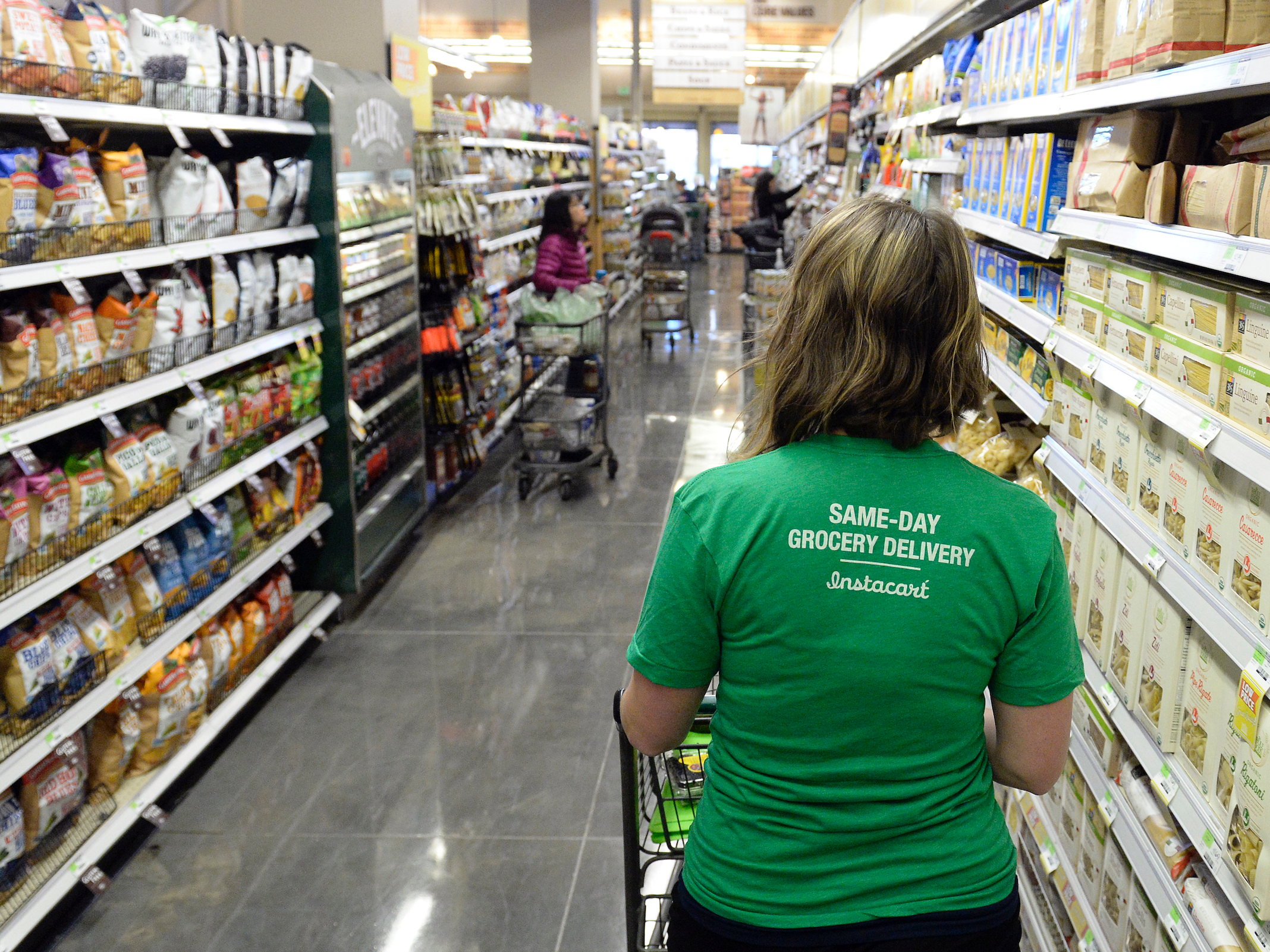
Denver Post Photo by Cyrus McCrimmon
- Kathy Harwick is a 61-year-old Instacart shopper who lives in Beaverton, Oregon.
- She’s been working for Instacart for four years. Before becoming a full-time shopper she worked in administration in the medical industry.
- Harwick said in the first two months of the coronavirus pandemic she had “no idle time,” with a flurry of orders rushing in hourly.
- This is her story, as told to freelance writer Meira Gebel.
- Visit Business Insider’s homepage for more stories.
I started delivering groceries for Instacart four years ago, after a former coworker told me about how he was making extra money on the side. Previously I worked in administration in the medical field.
I decided to leave my job and do something fun where I could make a comfortable living, and I’ve always loved grocery shopping. This also has given me a chance to meet new people and serve others.
I am 61, so I am not as young as many of the Instacart shoppers right now. I consider myself a seasoned shopper — I like to take my time and make sure everything in a customer’s order is correct, so that no eggs are broken and no bananas are bruised. I don’t like to rush through the store.
The application process is unlike anything I was ever familiar with. You have an interview with someone over the phone, you have a background check, but you never meet anyone in person.

Courtesy of Kathy Harwick
It took about three weeks from my first initial interview until my first day shopping. There was no in-person training; instead, we were given instructional videos to watch about how to weigh groceries, select items, and use the app. On your first order you try to take small batches just to get the hang of it.
Like other gig workers, Instacart shoppers are not Instacart employees — we are independent contractors and get paid through Instacart-owned Maplebear Inc. We get paid per order, not hourly, and the amount you can earn from one order to another frequently changes depending on size.
I work five days a week, from 8 a.m. to 6 p.m. Unlike some Instacart shoppers, I don't like to work 14-hour days.
I wake up around 7 a.m. every day and turn on my phone to see if any stores in my area have orders ready to go. I try to be out of the door by 8 a.m. I make sure to select and pick up my first order of the day from the closest store in my zone (a logistical geographical region) to my home. I shop and deliver groceries from five main stores in my zone [of] west Portland: New Seasons, Fred Meyer, Safeway, Albertsons, and Quality Food Center.
Instacart's algorithm works so that the more time you put in that you are available to shop, the more orders you will receive. You will also be at the top of the list when a new order comes in. If you mark that you are unavailable one day, you will get a ding and get placed at the bottom the next time you are available. Most gig work is like this and runs on a round-robin algorithm. I used to drive for Lyft, so the structure is familiar to me.
After I receive an order, I drive to the store and do the shopping. We are timed on our orders. If we have ten items in an order, Instacart allots us about one minute of shopping time per item. If an item is unavailable, we are supposed to mark it as unavailable on the app, alerting the customer of another similar item.
Sometimes the items the app suggests are not similar. I like to call customers or send a picture of the items around the missing item to see what they would prefer to avoid texting back and forth.
We can control how long it takes us to shop, but we can't control how long it takes to check out, which cuts into our time. I like to bag the groceries myself because I like things to be orderly. Vegetables with vegetables, that sort of thing.
I then drive and drop off the customer's order to their doorstep. I would say I drop off deliveries at about 15 houses or businesses in a single day. Before the pandemic, I was able to meet customers and have conversations and get to know them. Some still see my name on the delivery and send me a note saying they were happy I was doing their order.
In the four years I've been shopping for Instacart, I've averaged 25,000 to 30,000 miles on my Kia Optima just delivering groceries in west Portland.
As a five-star shopper — meaning I have an average of 5-star customer reviews — I try to make no less than $20 to $25 an hour because I don't want to push myself too hard and get hurt. I aim for $1,000 a week, but try to not make less than $750.
For me, the incentives Instacart offers are not worth it. Say there is a $65 incentive to do five batches (multiple orders within one job) within a certain timeframe. I know I am going to do five batches, but I won't get paid an extra $65. I'll make $50 from the orders and Instacart will give me $15 extra.
The pay has gone down considerably since I started working for Instacart four years ago. When I started delivering groceries in west Portland, there were 64 other shoppers. Now there are 800.
At the beginning of the pandemic, there were nearly 1,000 Instacart shoppers in my zone. Probably because people were out of work and looking for additional income. The number of shoppers has gone down since the state reopened in June, because people maybe are back at work, or didn't like being a shopper.
During the spring months of the coronavirus pandemic, my car was like a medical supply store. I didn't stop working, so I made sure to have ample disposable masks, hand sanitizer and disinfectant.
I also carried bottles of water, tissues, and gloves. On the Instacart app we are required to take and log our temperature for the day and report whether or not we were experiencing symptoms before we start delivering.
Instacart sent out packages of PPE, but I didn't request one because at that point in the pandemic many of the shoppers had already purchased their own supplies. It was a little too late.
Those first two months of the pandemic, there was no idle time. We were in such high demand. There were so many orders. Sometimes, before the pandemic, you could sit in your car before a new batch came in and rest, but during March and April we had no time to rest.
I never felt afraid of getting sick, because I trusted the precautions I was taking. I knew it was important to do this job during this scary time, because a lot of our customers are seniors and single moms who may not have the time or opportunity to go to the grocery store.
I made more money in those first two months of the pandemic than I ever had working for Instacart. We were making good money, but we aren't making that kind of money anymore. Maybe it will pick back up in the winter, when the weather gets worse, but I don't know.
My overall experience working for Instacart has been great, but it does take a toll on your body. I love working with customers because I am a people person and want to serve my community.
This job has been more fulfilling than my career in the corporate world, just not as stable. I may slow down working in the next couple years, but I like the flexibility of working when I want to. Working in the corporate world, it is hard to take time off. I have six grandchildren so I want to take days off and spend time with my family.
I take screenshots of all the nice things customers have said about my service. Some reach out to me and say they appreciate me taking the time to call them and make sure their orders were right. Tips make up about 95% of what we make shopping for Instacart, so I take those relationships with customers seriously. I never want to over promise and then under deliver.
Instacart did not respond to Business Insider's request for comment

